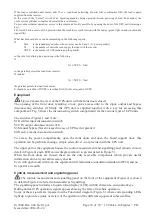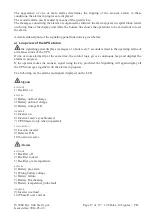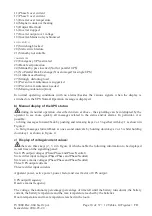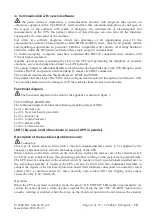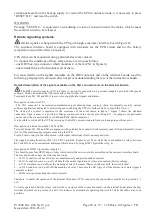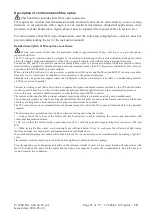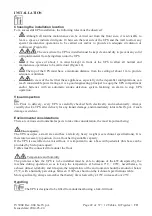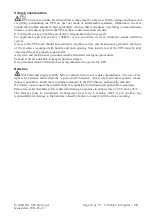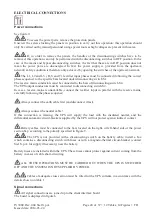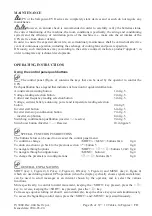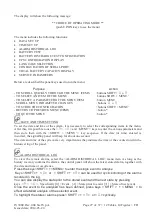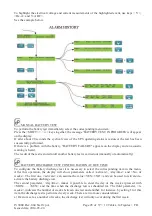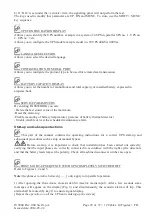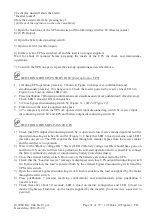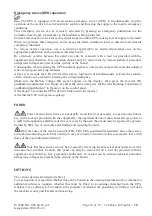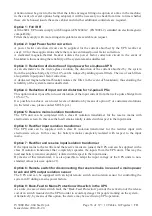
IV306E Rev. 004 Siel S.p.A.
Page 18 of 37 + 12 Tables, 14 F FR
Issued date: 2014-03-24
11) Phase S over current
12) Phase T over current
13) Inverter over temperature
14) Magnetic units overheating
15) Output filter fault
16) Inverter stopped
17) Inverter output over voltage
18) Inverter-Mains not synchronized
STATIC SWITCH
19) Switching blocked
20) Static switch failure
21) Stand-by not suitable
COMPLETE UPS
22) Emergency UPS activated
23) Back feed protection
24) Manual by-pass inserted (Not for parallel UPS)
25) No Parallel Data Exchange (Not envisaged for single UPS)
26) Ambient overheating
27) Strongly distorting load
28) Preventive maintenance is suggested
29) Preventive maintenance needed
30) Missing isolation (option)
In normal operating conditions (with no alarms),besides the various signals, when the display is
switched on, the UPS Normal Operation message is displayed.
b) Manual display of the UPS status:
during its normal operation - described in item a) above - the signalling can be interrupted by the
operator to see more quickly all messages related to the status and/or alarms. In particular, it is
possible:
- to bring messages forward/back by pushing and releasing keys 2 or 3 together with key 1 as shown in
Figure 4.
- to bring messages forward/back at one second intervals by holding down keys 2 or 3 whilst holding
down key 1 as shown in Figure 4.
c) Display of voltage/current values:
there are three keys (2, 3, 4 in Figure 4) which enable the following information to be displayed
in real time on the signalling panel:
Six UPS output voltages (Phase/Phase and Phase/Neutral)
Six rectifier input voltages (Phase/Phase and Phase/Neutral)
Six reserve mains voltages (Phase/Phase and Phase/Neutral)
Three UPS output currents
Three rectifier input currents
Apparent power, active power, power factor and crest factor of UPS output.
UPS output frequency
Reserve mains frequency
The voltage, the autonomy percentage (percentage of time left until the battery runs down), the battery
current, the battery temperature and the max temperature reached by the batteries
Room temperature and max temperature reached in the room.













